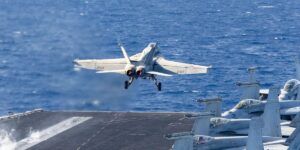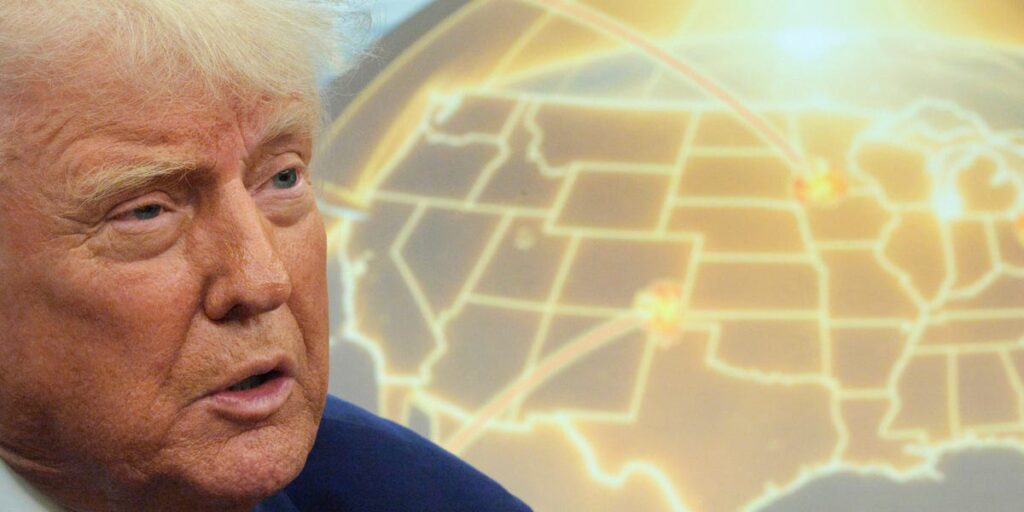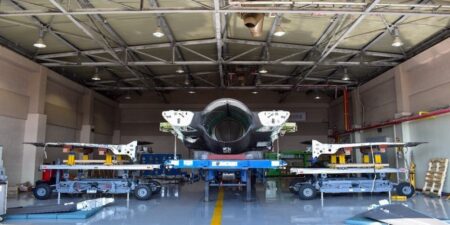President Donald Trump officially announced his plans on Tuesday for a Golden Dome system that focuses on countering potential missile threats from China and Russia.
The plan is ambitious, with the system meant to officially put American anti-missile weapons in space for the first time.
Speaking to reporters in the Oval Office, Trump estimated that the Golden Dome would be completed within three years and cost about $175 billion.
He’s requested an initial $25 billion “to help construction get underway” through a tax break bill that Congress is deliberating.
“That’s the initial sort of down, deposit,” Trump said of the first tranche. “And we have, probably, you’re talking about $175 billion total cost when this is completed.”
The Congressional Budget Office has estimated in early May that it could cost between $161 billion and $542 billion to launch and operate a full constellation of space-based interceptors — the core aspect of the Golden Dome — for 20 years.
These satellite weapons would be designed to shoot down intercontinental ballistic missiles from orbit, and the congressional cost projection varies so much because it depends on how many interceptors would be purchased.
That answer would largely rely on how many interceptors the US thinks it needs to counter China and Russia, which Trump outlined in his January executive order as one of the Golden Dome’s priorities.
“This design for the Golden Dome will integrate with our existing defense capabilities and should be fully operational before the end of my term,” Trump told reporters. “So we’ll have it done in about three years.”
Overall, the Golden Dome is envisioned as a multi-layered shield, meaning it would mix both space and ground capabilities. Trump initially called it an Iron Dome, inspired by Israel’s missile defense, but renamed it in February.
The system would be built to detect enemy strikes before they launch and destroy the missile before it can get in the air. If that fails, it would try to down the missile in mid- or early flight.
A final stopgap would be aimed at intercepting the missile just before it reached its target.
“It will be capable of intercepting missiles launched from the other side of the world,” Trump said. “Even if they’re launched from space.”
Countering China and Russia from space
The president has repeatedly emphasized space warfare as a centerpiece for the Golden Dome. To that end, he also announced that Gen. Michael Guetlein, the Space Force’s vice chief of space operations, would lead the project.
“While we have been focused on keeping the peace overseas, our adversaries have been quickly modernizing their nuclear forces,” Guetlein said at Tuesday’s announcement, warning that US rivals were “building space weapons.”
Russia was reported last year to be building a nuclear space-based weapon, though it was unclear if this meant the asset was nuclear-armed or nuclear-powered. The 1967 Outer Space Treaty, of which Russia is a signatory, prohibits nuclear weapons or “weapons of mass destruction” from being put into space.
Guetlein also mentioned hypersonic missiles, which China has been developing in recent years. In 2021, Beijing startled the US with a successful test of a nuclear-capable missile that uses a hypersonic glide vehicle to travel faster than five times the speed of sound and potentially strike anywhere on the planet.
The missile also demonstrated an ability to exit and drop back into Earth’s atmosphere during flight, also known as fractional orbital bombardment. This means that it can be fired from an unexpected direction and be even harder to detect or intercept.
The Golden Dome’s focus on countering China and Russia marks a shift from the US’s past stated goal for missile defense, which traditionally has been to prevent strikes from rogue states such as North Korea.
Washington’s usual strategy for deterring nuclear strikes from Beijing and Moscow, which are designated as peer or near-peer rivals, was instead to rely on American nuclear weapons as a counterthreat.
The Congressional Budget Office has said that if the Golden Dome were to deal with Chinese and Russian missile threats, it would need a much larger constellation of advanced space-based interceptors, thereby driving up the cost.
Speaking on Tuesday, Trump said he was confident he could get Congress to approve the needed money.
“You know, some funding is tough and some is easy,” he said. “When we say we’re going to save everyone’s lives in a crazy world, it seems to be very easy to get.”
Meanwhile, China and Russia have jointly condemned the Golden Dome as an “unconstrained, global and multi-tier missile defense system,” saying on May 8 that it had a “deeply destabilizing character.”
Read the full article here
















